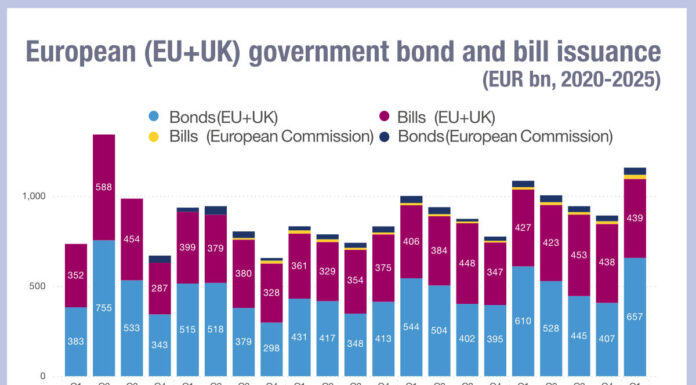Gareth Coltman, Head of European Product Management at MarketAxess spoke to The DESK about the real impact MiFID II will have upon the data landscape.

How has the advent of MiFID II affected demand in the quantity and quality of the information you provide?
MiFID II is generating massive demand for all types of content with implications across the trading lifecycle. The main areas which are driving the demand are pricing and liquidity discovery. The other big one is obviously best execution, from the buy- and sell side, looking at content needed to meet the growing best execution obligations.
We launched Axess All in February 2015 as a response to the demand for increased transparency and looking forward to what was going to change under MiFID II. As the first trade tape for fixed income markets in Europe, the intra-day aggregate pricing and volume information provided in Axess All gives participants the tools to assess market movements and liquidity risk.
So, has MiFID II accelerated an already existing industry trend?
There is no doubt that MiFID II is an accelerator; fixed income and credit markets already required a higher level of sophistication in terms of tools and content given the unique liquidity dynamics. In the US we have experience with TRACE, which showed us the positive impact that near real-time information can have on market dynamics. So there is the same kind of demand for liquidity information outside of the European marketplace.
Furthermore, there’s the need for more analytical data tools as a result of MiFID II. A good example is our Global Composite Price, which pulls from sources including TRACE, Trax and MarketAxess activity. This type of market-wide information has implications on helping firms meet their MiFID II best execution requirements and we’ve thus seen considerable demand for this type of content.
Is that reflected in the type of data demanded?
A big source of content we provide to clients is from Open Trading, our all-to-all marketplace. It effectively allows clients to identify opportunities, like axes, in addition to the typical dealer-supplied pricing. We provide dealer-contributed pricing and anonymous axes through Open Trading, so you can have axes coming from other investors, or other market makers that you may not have a direct relationship with. Axe contribution from Open Trading in addition to Axess All and the Composite Price are helping firms figure out how they can respond most effectively to trading opportunities.
Are there data gaps in the market?
In theory MiFID II is going to create new levels of transparency, but the reality is that in credit there is going to be a very large gap in terms of coverage. We estimate only 2% of credit trade volume will be liquid in the first year. There is also going to be a gap in terms of immediacy. If something is not liquid it’s going to be delayed on the post trade side by at least 48 hours. Although transparency might be relatively good in liquid credit, certainly away from that it’s still a challenge.
We continue to see demand from clients to enrich the data set that MiFID II will provide. Our subsidiary Trax will be an Approved Publication Arrangement (APA) under MiFID II, so we will be providing data services that are sourced from that APA database to pre-trade quotes and post-trade reports. In addition to that we will be continuing to enrich that content with our existing Trax products, with our aggregate pricing and volume data for example and with real-time composite pricing data.
How do you think that trading itself will be affected post-MiFID II?
Traders need choice in the way that they approach the market. If increased transparency makes it hard to execute larger size orders, they may want more pre-trade content on where to direct those kinds of orders. Traders ultimately need a tool set that gives them as much content pre trade, and as much choice as possible about the way they engage with the market. And that’s been our approach; which is to provide as much flexibility and choice as possible and not to dictate how clients should trade, who they should trade with and what type of protocol is the most appropriate.
Can the data firms are gathering for the reporting process in MiFID II be fed back into and used effectively for supporting the trading and execution process?
That’s the Holy Grail; if there’s a way to consume all of this data on a real-time basis, it would allow them to produce a fully informed trading decision. I think 24 months ago many clients were trying to find such a solution, ideally a cross-asset solution. I think the reality is it’s been an enormous challenge for clients to source the data, choose the providers, and integrate that into their systems.
They are coming to us in recognition of the content and experience that we have around credit specifically, and helping them build out their compliance tools, including those for TCA and best execution. But also developing these pre-trade content solutions to integrate with our platform and within our protocols. Also, through Trax, we are helping firms meet their trade and transaction reporting obligations. Data is key in all aspects of the trade lifecycle, whether it’s market data to inform trading decisions or reference data to ensure regulatory compliance.
Could enhanced transparency lead firms to review business models?
We have already seen that emerging through some of the work we have done around transparency and pricing. Once you have transparency in the market, there’s greater ability for more firms to engage with the market and increase interactions in a brand-new way. With Open Trading, we have allowed anybody to trade with anybody else, without having to necessarily have a historical trading relationship. Opening those trading connections plus adding valuable market content directly into the trading workflow has proven to be a strong combination.
Can you see ways in which a buy side firm might positively differentiate their data tools?
They need to be looking to firms that can provide real traded content in addition to just indicative content. So much of the pricing data currently available relies entirely on indicative pricing or an evaluation. Firms should get as much actual, hard trading data as they can.
AllianceBernstein’s ALFA platform is a good example of ways firms can integrate liquidity information. ALFA would, on a real-time basis, match together trading opportunities that were coming into the market, against AB’s internal portfolios. Spotting a bond that provides similar exposure, but at a slight improvement in yield. Or potentially a slight decrease in liquidity risk. Leveraging a trading strategy that incorporates traded data as well as a broad and diverse trading network will help firms gain an edge.
©TheDESK 2017
©Markets Media Europe 2025
























